Have you signed up for SLOCA Rewards this year? Would you like a free coffee/tea/kombucha every day and monthly exclusive deals to local businesses? As we are halfway through our first week at SLOCA, I (Wei) know that I have been reaching for the caffeine more than usual. With SLOCA Rewards, every day you bring in your tumbler to the Den you have the opportunity to get caffeinated AND support our school AND contribute to your Everything Counts goal. To find out more information and to sign up for SLOCA Rewards click here.
Today, we welcome guest blogger, Sage Theule. Sage is our Design and Marketing Manager as well as the Primary Art teacher. She has written about the designs behind the 2021-2022 tumbler. As a SLOCA grad and recent Biola grad with a degree in Studio Arts, Sage is immensely qualified to speak to this topic.
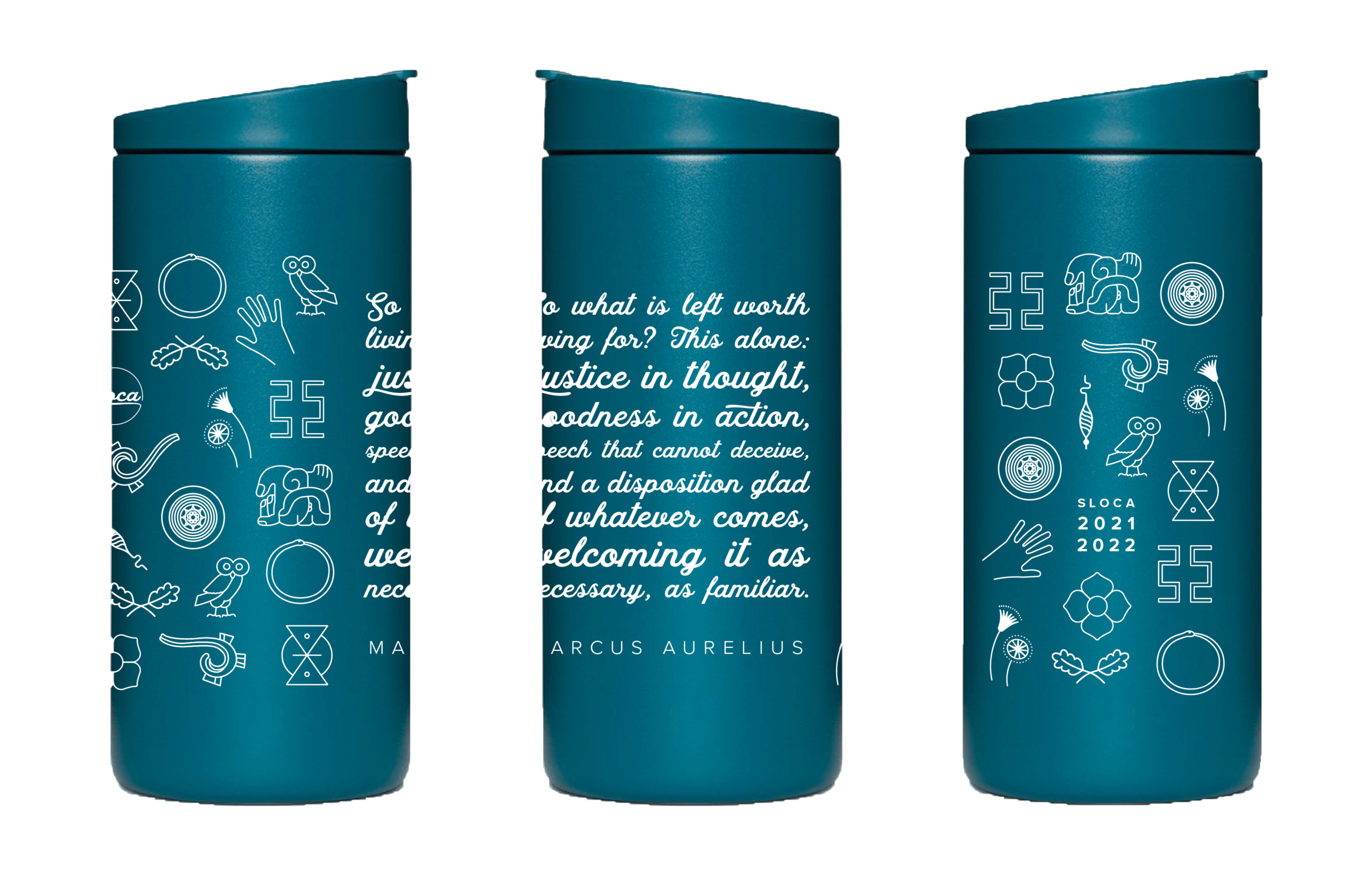
This year, as we pursue the true, the good, and the beautiful together, I’ve been reflecting a bit on what have been my favorite projects here in my job at SLOCA. To me, there’s a clear answer: the ones that allow me to create something beautiful (or at least attempt to) while connecting to and reflecting on the true and good things of the past. That being said, when the Development + Marketing teams came up with the idea for our new, exclusive 2021-22 tumbler, I was a bit skeptical. To find a suitable quotation from the annals of the ancient world and then to find ancient symbols from around the world that correlated to that quotation seemed a very daunting task. But many hours of research + digital tracing later, and here we are with a lovely teal mug emblazoned with wisdom-filled words from Marcus Aurelius + twelve ancient symbols.
“So what is left worth living for? This alone: justice in thought, goodness in action, speech that cannot deceive, and a disposition glad of whatever comes, welcoming it as necessary, as familiar.”
Each of the twelve symbols corresponds to one part of our quotation, from Marcus Aurelius’ Meditations. If you’re a rewards member,we’ve included an insert to decode those symbols and find out where they’re from. But as I was gathering those symbols, I was struck by how many symbols exist across regions. Below is a map to help you see what I mean. All the symbols in dark blue primarily exist in one place, but the ones in the other colors pop up in the ancient world more widely.
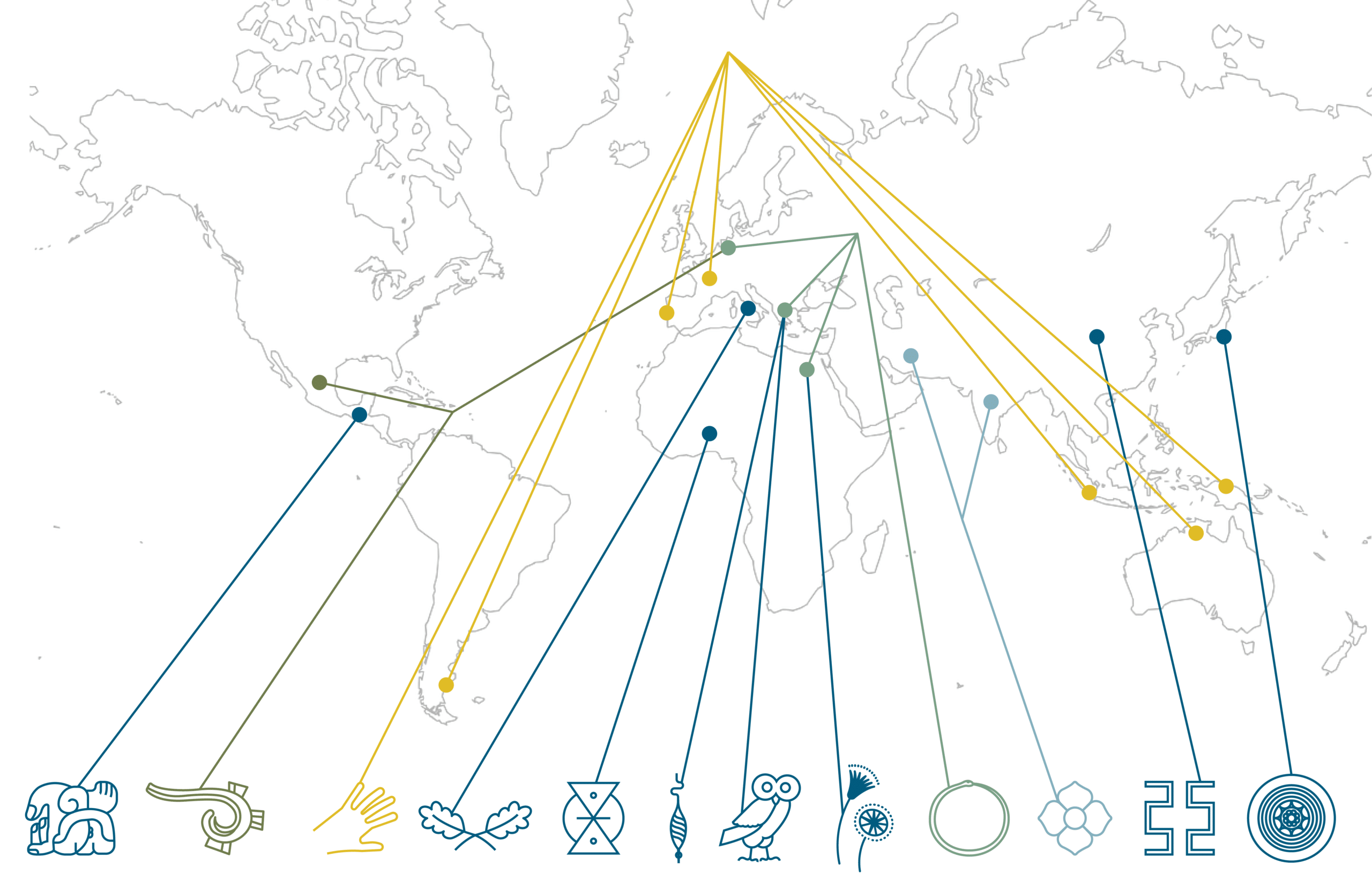
Take the hand symbol for example. This symbol is the oldest of our twelve, originating from cave paintings, some of the earliest known art in the world. No one knows for sure why Ice Age peoples stenciled or printed their hands on the walls of caves, but some scholars believe that a handprint was like a signature, a sort of “I was here.” For our quotation, we correlate this symbol with the last words of the quote—”as familiar”—to represent our human similarity across time and space. Because the hands of the Ice Age peoples are essentially the same hands we see on our own bodies. And because the same hand art exists across the world: from the Cueva de las Manos in Argentina to caves in France, Spain, Indonesia, Australia, and Papua New Guinea.
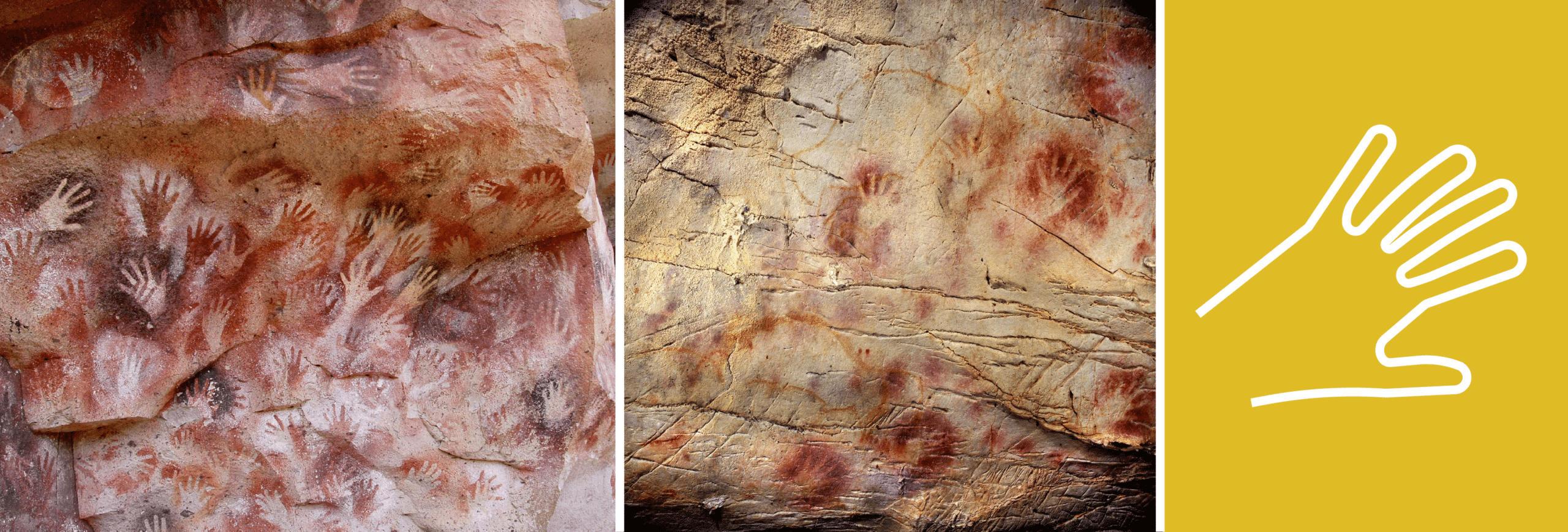
Another interesting cross-cultural symbol is the Ouroboros. The first known representation of this snake eating its own tail was found in King Tut’s tomb. This symbol also made its way to Ancient Greece, and from there to the Germanic cultures in medieval Europe and specifically to the world of alchemy. This symbol, quite aptly, represents life, death, and rebirth.

Then we come to the lotus, which pops up in ancient (and post-ancient) Egypt, India, Persia, and China. The version we’ve chosen for our cup is most inspired by the Indian version, which symbolizes something like purity, perfection, and moral values in Hinduism and Buddhism. In Egypt and Persia, this symbol was one of royalty and is depicted below in the hand of Darius, one of the most famous Persian kings.
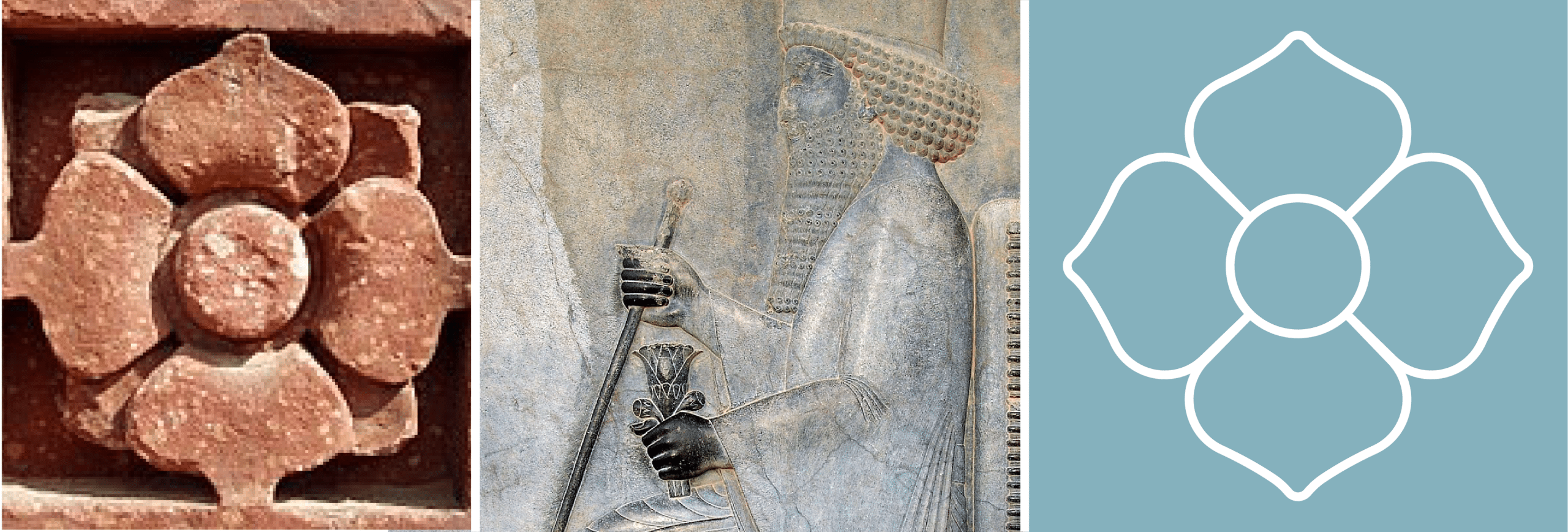
And finally, we have the speech scroll—the ancient Mesoamarican version of a speech bubble. This symbol shows that someone in the painting is speaking. Speech scrolls were also used in Gothic paintings of the Middle Ages, where they were additionally known as banderoles and were usually more representational (shown as an actual scroll).
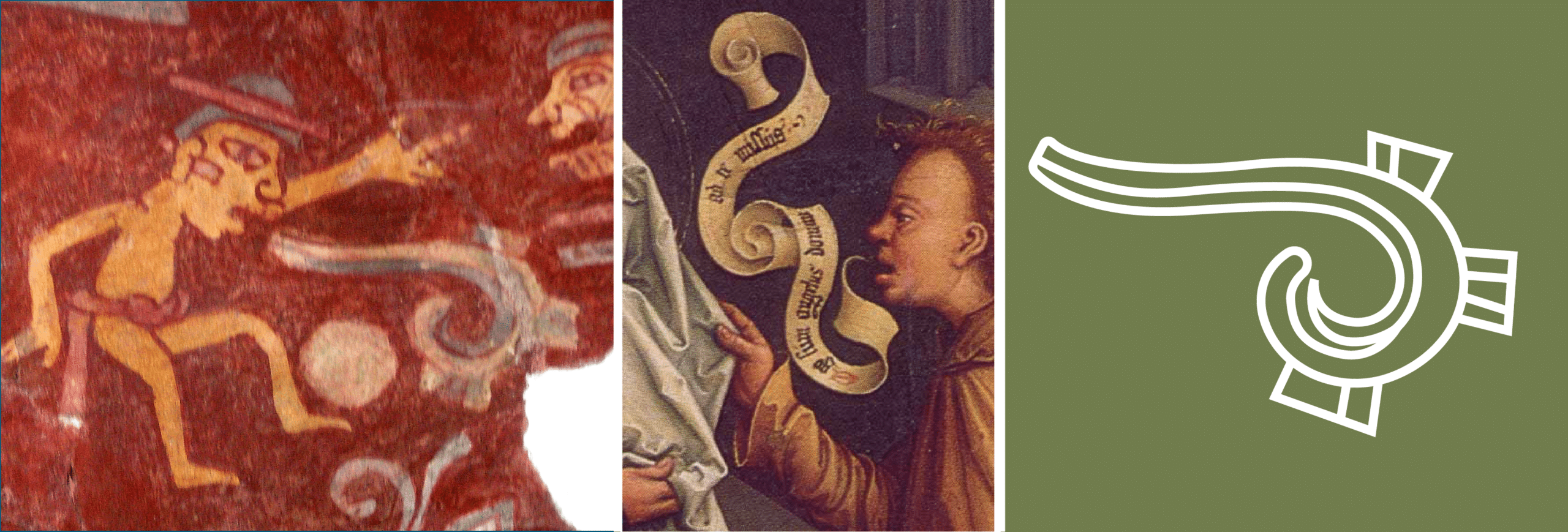
In a day and age where many of our symbols are semi-universal (think emojis, for example), these cross-cultural symbols may not feel very special. But I find it so interesting that, in a time without internet, telephones, or TV, these symbols exist across multiple cultures, and sometimes continents. I’m not historian nor anthropologist enough to tell you how much of that is due to trade routes and communication. I can’t tell you why these symbols resonated with more than one society. But I’d like to think, at least in part, that something about these symbols is so true, or at least so useful, that they can’t help but mean something to people around the world. Something about them speaks to our human experience, regardless of time or place. Which is part of why we study the ancients anyway—to remind ourselves that we are not alone in this day and age, that we come from somewhere, and that we can gather wisdom for our present/future from the symbols, stories, and wisdom of the past.





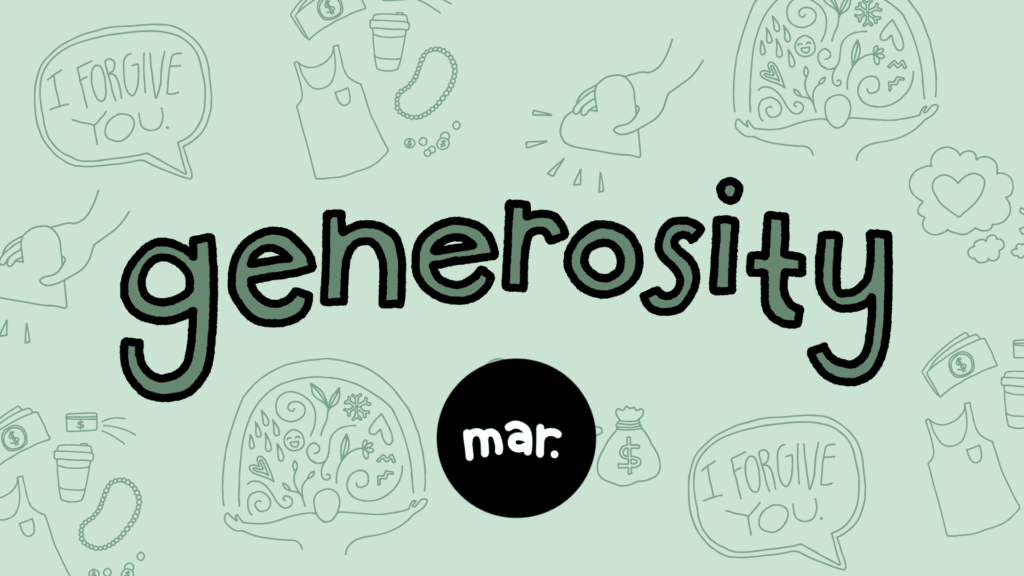
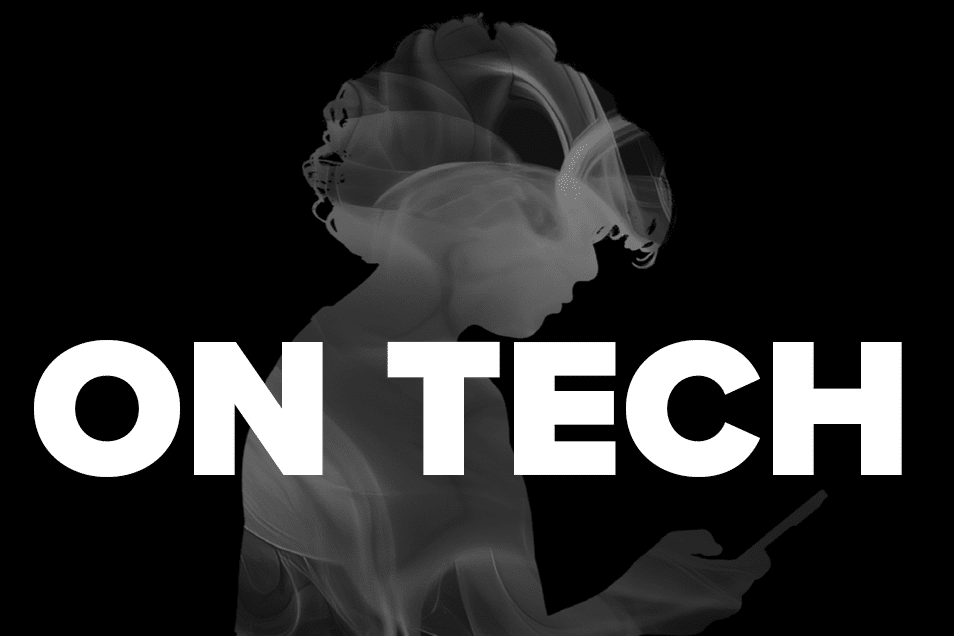






5 thoughts on “SLOCA Rewards”
Wow! That was fascinating. I loved reading this, Sage! And, I love the tumbler–it’s beautiful. Thanks for all your work on this and for sharing your knowledge.
Good work here, and beautiful tumbler. Grateful for the opportunity to have this educational highlight while tackling my email this morning. Powerful perspectives on the things that connect us across geography and time.
Thank you Sage! I can’t wait to play around with the “speech bubble,” in Intermediate. I never knew that before!
So fascinating Sage. Beautiful tumbler! I might have to do something with those symbols too! Thank you for the inspiration!
Wow, Sage! Thank you for taking the time to so thoughtfully explain the origin and meaning of these symbols! I love my Rewards tumbler – it’s like a history lesson in a cup! 🙂 SLOCA is so fortunate to have such a gifted graphic designer and art teacher.